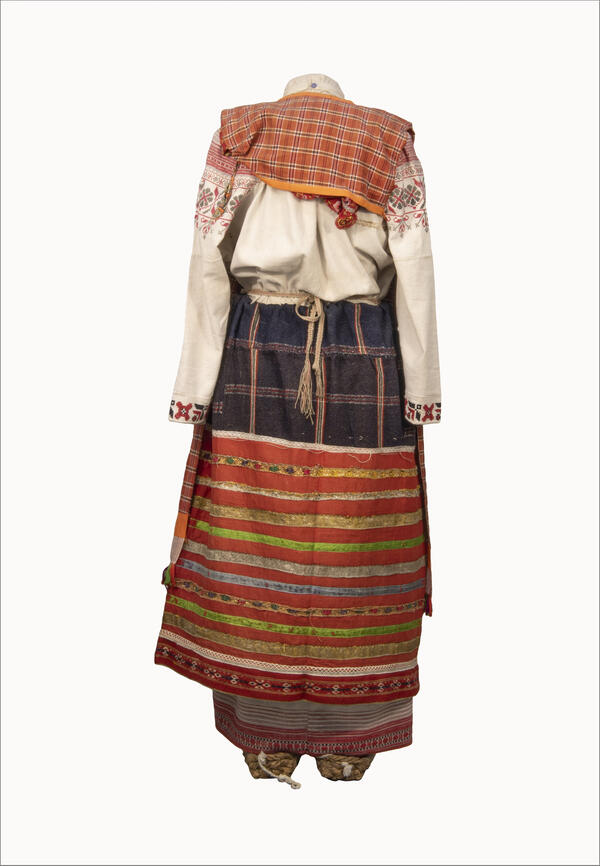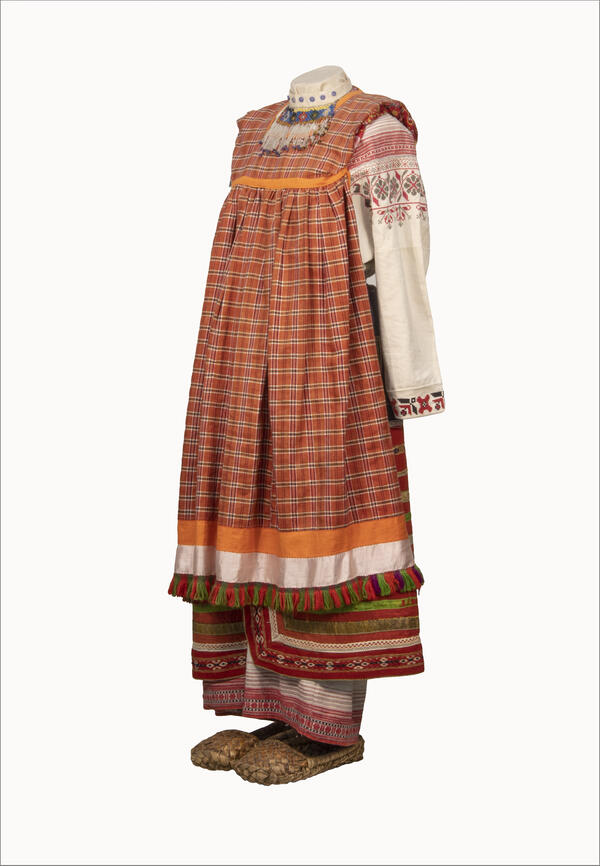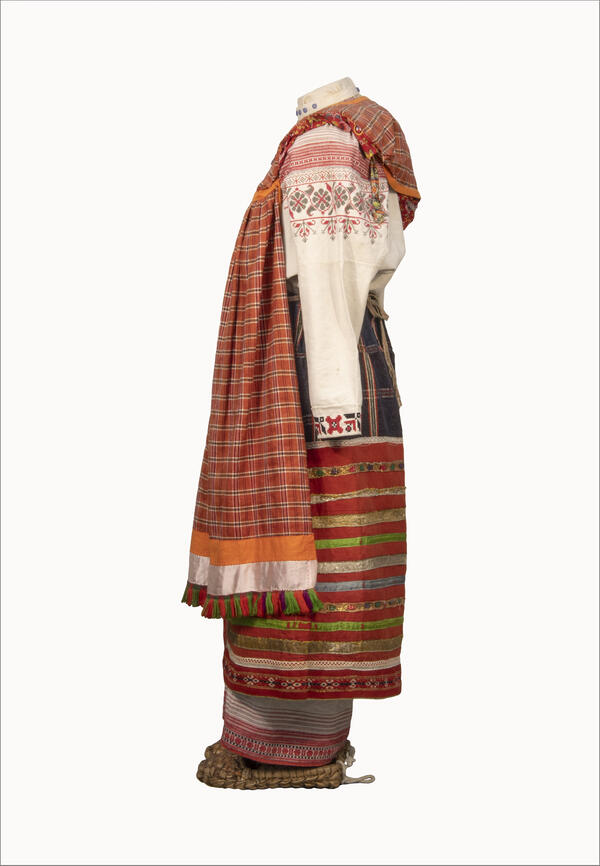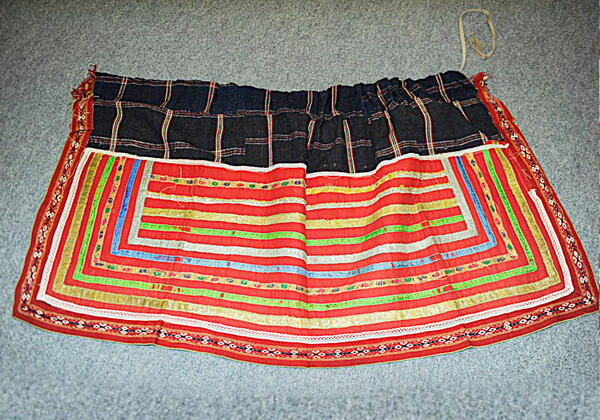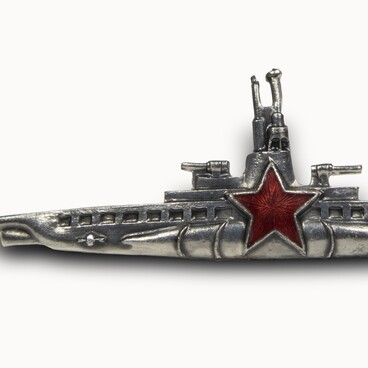A poneva or ponka is an ancient women’s clothing item, a woollen skirt that married women used to wear over their shirts. Its name comes from the word “ponyat” in the meaning “to embrace” — the unbuttoned skirt “embraced” a girl. The poneva costume from Kaluga Governorate consists of a poneva, a long shirt and an apron.
Putting on a poneva was a special ritual. People would say of a girl, “She took off her shirt and put on a woman’s yoke”, which meant that she was ready to marry and accept a woman’s lot in life. Poneva was also called a “woman’s care” and “woman’s bondage”.
The poneva on display is dated to the early 20th century. It was called “kind”, meaning good. It is sewn from homespun woolen black fabric with a large checked pattern. The checks are marked with narrow strips of red, white and green threads. It was possible to determine where a girl lived by the width of the checks of the poneva, and her age — by the number of ribbons, embroidery and laces. Three cloths were used to sew a poneva — the back and two side ones. The poneva was most often sewn by hand, but the skirt in the exhibition is made on a sewing machine.
On the front side, red calico is sewn on top of a black checked fabric, as well as gold and silver braid, and pink and green satin ribbons. Along the edges of the poneva is a wide homespun band with a geometrical pattern made of red and green woolen threads. All the stripes are sewn vertically in the front and horizontally in the back. This type of decoration was called “round edged”. The ornamentation takes up two thirds of the poneva, and the black checked cloth is visible only on the top.
In Kaluga Governorate women also wore round ponevas. They were wrapped around the shirt and fastened at the waist with a cord. In the front a shirt was visible between the flaps, which was also beautifully embroidered. During fieldwork the corners of the poneva were tucked under the belt so that the hem would not get dirty. The shirt and poneva were covered with an apron.
When a girl got married, a shirt and poneva became her main garment. A mother would prepare a dowry of 12 poneva cloths for her daughter. 3–4 ponevas were sewn for the wedding, and the rest of the material was put aside for the future.
Putting on a poneva was a special ritual. People would say of a girl, “She took off her shirt and put on a woman’s yoke”, which meant that she was ready to marry and accept a woman’s lot in life. Poneva was also called a “woman’s care” and “woman’s bondage”.
The poneva on display is dated to the early 20th century. It was called “kind”, meaning good. It is sewn from homespun woolen black fabric with a large checked pattern. The checks are marked with narrow strips of red, white and green threads. It was possible to determine where a girl lived by the width of the checks of the poneva, and her age — by the number of ribbons, embroidery and laces. Three cloths were used to sew a poneva — the back and two side ones. The poneva was most often sewn by hand, but the skirt in the exhibition is made on a sewing machine.
On the front side, red calico is sewn on top of a black checked fabric, as well as gold and silver braid, and pink and green satin ribbons. Along the edges of the poneva is a wide homespun band with a geometrical pattern made of red and green woolen threads. All the stripes are sewn vertically in the front and horizontally in the back. This type of decoration was called “round edged”. The ornamentation takes up two thirds of the poneva, and the black checked cloth is visible only on the top.
In Kaluga Governorate women also wore round ponevas. They were wrapped around the shirt and fastened at the waist with a cord. In the front a shirt was visible between the flaps, which was also beautifully embroidered. During fieldwork the corners of the poneva were tucked under the belt so that the hem would not get dirty. The shirt and poneva were covered with an apron.
When a girl got married, a shirt and poneva became her main garment. A mother would prepare a dowry of 12 poneva cloths for her daughter. 3–4 ponevas were sewn for the wedding, and the rest of the material was put aside for the future.

